-
01-01-2015
Ineffective airway clearance: accuracy of clinical indicators in asthmatic children
Revista Brasileira de Enfermagem. 2015;68(5):862-868
Abstract
Ineffective airway clearance: accuracy of clinical indicators in asthmatic children
Revista Brasileira de Enfermagem. 2015;68(5):862-868
DOI 10.1590/0034-7167.2015680514i
Views0See moreABSTRACT
Objective:
to analyze the accuracy measurements of clinical indicators of the nursing diagnosis Ineffective airway clearance.
Method:
cross-sectional study with 205 asthmatic children treated in the emergency unit of a hospital in the city of Fortaleza, Ceará. An interview script and pulmonary evaluation were used for data collection.
Results:
the diagnosis of Ineffective airway clearance was present in 89.3% of the sample. The most prevalent clinical indicators were dyspnea, change in respiratory rate, change in respiratory rhythm, orthopnea, adventitious respiratory sounds and ineffective cough. The clinical indicators with highest sensitivity were dyspnea, change in respiratory rate, change in respiratory rhythm, orthopnea and adventitious respiratory sounds. Ineffective cough and adventitious respiratory sounds were the indicators with best specifi city.
Conclusion:
the clinical indicator adventitious respiratory sounds was the best predictor of Ineffective airway clearance in asthmatic children treated in emergency units.
-
01-01-2015
Mortality from external causes in Pernambuco, 2001-2003 and 2011-2013
Revista Brasileira de Enfermagem. 2015;68(5):855-861
Abstract
Mortality from external causes in Pernambuco, 2001-2003 and 2011-2013
Revista Brasileira de Enfermagem. 2015;68(5):855-861
DOI 10.1590/0034-7167.2015680513i
Views0See moreABSTRACT
Objective:
to describe the mortality from external causes, by Health Regions in Pernambuco, during the periods of2001-2003 and 2011-2013.
Method:
descriptive study with data from the Mortality Information System. For data analysis we used percentage, percentage variation and proportion ratio.
Results:
mortality from external causes reduced in Pernambuco, however, mortality increased in some health regions of the countryside. Increased numbers of deaths from accidents and event of undetermined intent were registered. There was an increase of deaths classified as “other/unspecified” event of undetermined intent.
Conclusion:
there was a change in the spatial distribution of mortality from external causes moving to Pernambuco countryside regions. We found necessity for data classification regarding deaths from external causes and strengthening of the monitoring.
-
01-01-2015
Evaluation of scientific production, patents and human resources training in the Brazilian nursing
Revista Brasileira de Enfermagem. 2015;68(5):846-854
Abstract
Evaluation of scientific production, patents and human resources training in the Brazilian nursing
Revista Brasileira de Enfermagem. 2015;68(5):846-854
DOI 10.1590/0034-7167.2015680512i
Views0See moreABSTRACT
Objective:
to evaluate scientifi c production, patents and human resources training of nursing researchers with scholarships of research productivity (PQ) in National Counsel for Technological and Scientific Development (CNPq) in the 2000-2012 historic series; to verify the association between this production and characteristics of the researchers regarding gender, education and origin.
Methods:
this analytic cross-sectional study whose inclusion criterion was to be a nursing PQ/CNPq researcher during the period in question. We analyzed curriculum lattes of 208 researchers with scholarships between 2000 and 2012. For statistical analyses we used the SPSS® software.
Results:
the study points to female predominance, concentration in the Southeast region and existence of an association between scientific production, patents and human resources training and education, gender and origin of the researcher.
Conclusion:
the study presents a significant participation of nursing PQ/CNPq researchers in scientific production and in human resources training, and a modest involvement in the production of patents.
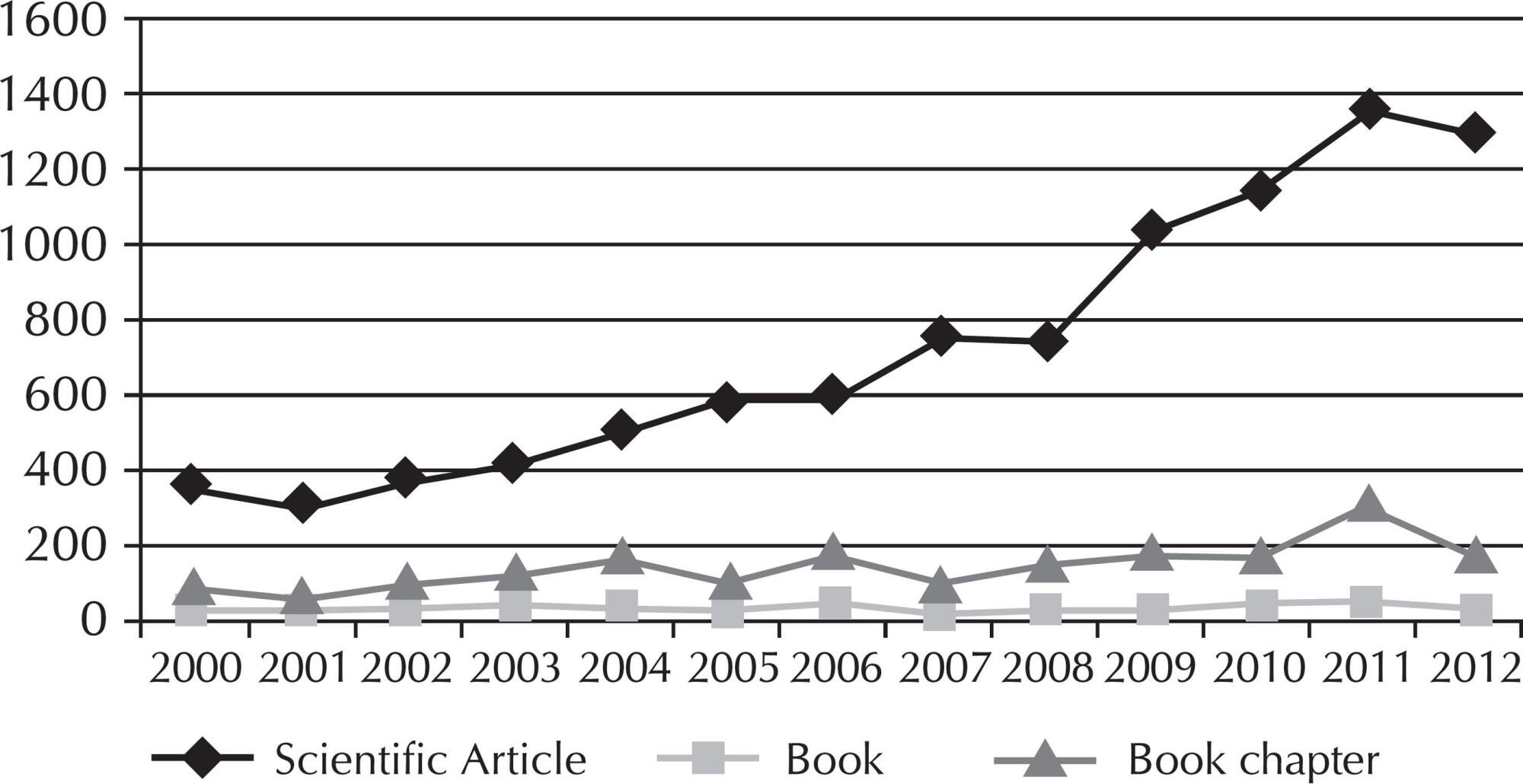
-
01-01-2015
Structure, process and outcomes of organ and tissue donation for transplantation
Revista Brasileira de Enfermagem. 2015;68(5):837-845
Abstract
Structure, process and outcomes of organ and tissue donation for transplantation
Revista Brasileira de Enfermagem. 2015;68(5):837-845
DOI 10.1590/0034-7167.2015680511i
Views0See moreABSTRACT
Objective:
to analyze the factors related to the structure, process and outcomes of organ and tissue donation for transplantation.
Method:
analytic, longitudinal and quantitative study, conducted in six hospitals in Natal/RN, between August 2010 and February 2011, with 65 potential donors (PD), by means of no participant observation structured script.
Results:
regarding the donation structure, there was deficiencies of physical resources (temperature control), materials (mobile radiology) human resources (nurse technicians) and lack of adequate records and care protocols. In the process of donation, the biggest problems were related to the evaluation stages, brain death diagnosis, maintenance and documentation, with greater proportion of care for the non-donor.
Conclusion:
the structure and process possibly determined the result of 72.3% no donation implementation of potential donors, indices compatible with the national data, but contradictory to those of Spain, which manages to transplant organs of 86.7% of its donors.
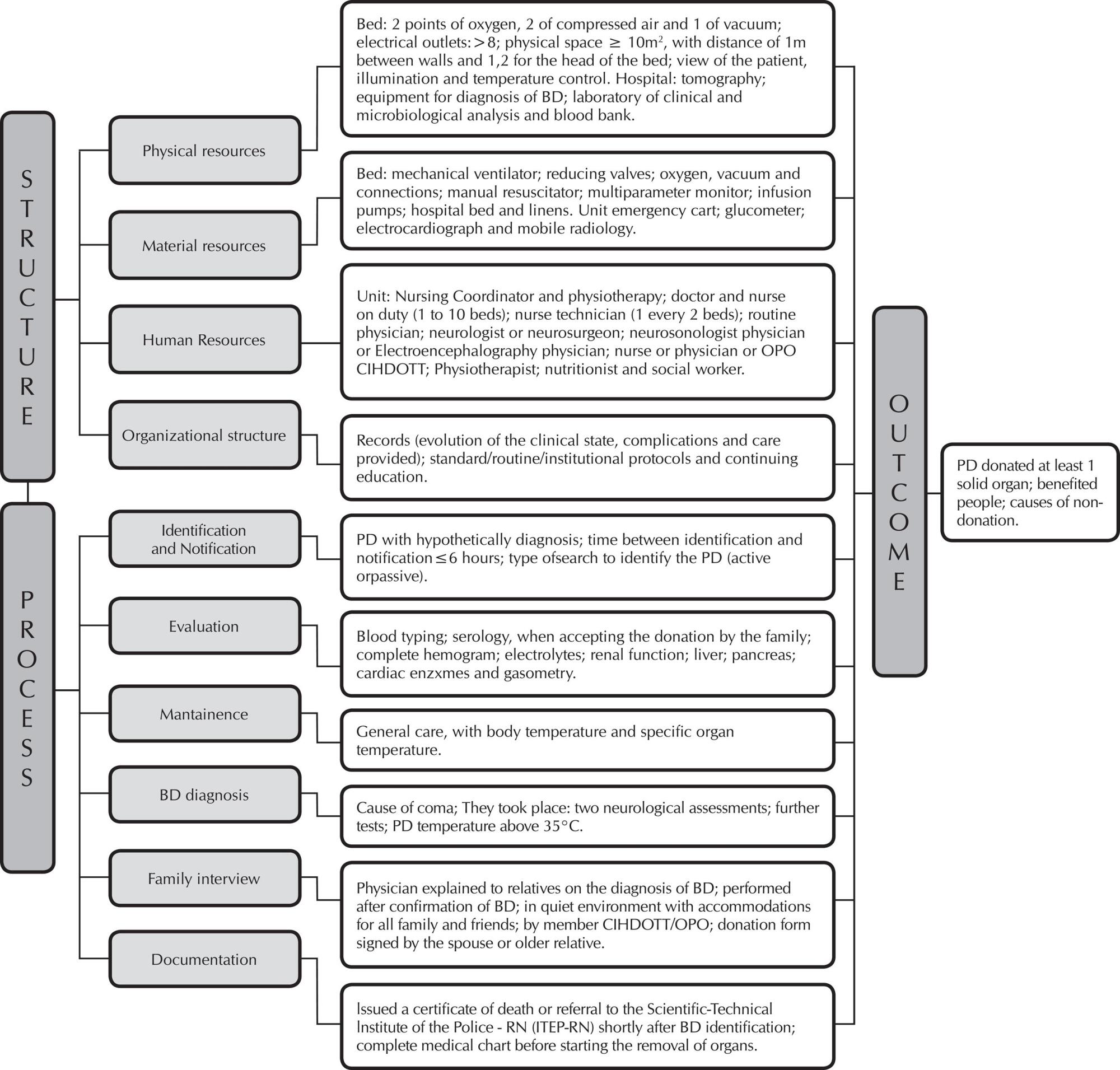
-
01-01-2015
The nurse in the area of collective health: conceptions and competencies
Revista Brasileira de Enfermagem. 2015;68(5):830-836
Abstract
The nurse in the area of collective health: conceptions and competencies
Revista Brasileira de Enfermagem. 2015;68(5):830-836
DOI 10.1590/0034-7167.2015680510i
Views0See moreABSTRACT
Objective:
to learn coordinators and professors’ conceptions from undergraduate Nursing courses of public universities in northern Brazil regarding collective health and to know the necessary competencies to work in the area.
Method:
data were collected through semi-structured interviews and subjected to thematic analysis.
Results:
the participants consider population health as an essential area for the training of nurses, where professionals have autonomy and confidence. It is an interdisciplinary, intersectoral and multidisciplinary field, with extensive scope, that studies the Unified Health System (SUS). The competencies to work in collective health identified were: to work at the SUS, to understand the health and disease process and its determinants and to develop actions towards integrality, to conduct health education, researches and systematization of the nursing care.
Conclusion:
the variety of conceptions about collective health among participants might reflect in training of nurses and their working area.
-
01-01-2015
Level of dependence among patients in a surgical unit
Revista Brasileira de Enfermagem. 2015;68(5):824-829
Abstract
Level of dependence among patients in a surgical unit
Revista Brasileira de Enfermagem. 2015;68(5):824-829
DOI 10.1590/0034-7167.2015680509i
Views0See moreABSTRACT
Objective:
to identify the complexity of the nursing care of inpatient surgical unit patients, using the Perroca patients classification scale.
Method:
a descriptive, cross-sectional study with 546 reviews of 187 patients between October and December of 2012. Data were analyzed using SPSS 18.0 and the Kappa test, to measure interrater agreement.
Results:
a predominance of patients in the categories of semi-intensive (46.5%) and intermediate care (44.0%) was found, with a prevalence of unassisted bath (58.4%) in the total sample, and bed bath (69.3%) in the semi-intensive care patients. The level of agreement between two pairs of raters was considered good.
Conclusion:
the systematic application of the instrument was useful as a complementary measure of the level of patient dependence, and may contribute to the improvement of the working process, refl ecting on management decision-making with regard to nursing workload
-
01-01-2015
Psychological violence in the nursing work
Revista Brasileira de Enfermagem. 2015;68(5):817-823
Abstract
Psychological violence in the nursing work
Revista Brasileira de Enfermagem. 2015;68(5):817-823
DOI 10.1590/0034-7167.2015680508i
Views0See moreABSTRACT
Objective:
to investigate and characterize psychological violence practices within teams in the relationship between patients, caregivers and other professionals with the nursing staff of the public hospital network of Caxias, in the State of Maranhão, Brazil.
Method:
descriptive, quantitative, cross-sectional study with data collected by form between November/2013-May/2014.
Results:
verbal aggression is the most common psychological violence subtype 95% (84), followed by bullying 27% (24). Emergency rooms 51% (45) are the most frequent place; patients 60% (53) are the main aggressors; nurses 76% (19) suffer more violence, being mostly female, young and inexperienced.
Conclusion:
the largest number of occurrences was of verbal aggression perpetrated by patients against nurses in the emergency room. Workers try to pretend that nothing happened or are inert in the face of violence. Employers do little about the case, referring to the need for strategies to control violence.
-
01-01-2015
Dietary intake and stress in patients with acute coronary syndrome
Revista Brasileira de Enfermagem. 2015;68(5):810-816
Abstract
Dietary intake and stress in patients with acute coronary syndrome
Revista Brasileira de Enfermagem. 2015;68(5):810-816
DOI 10.1590/0034-7167.2015680507i
Views0See moreABSTRACT
Objective:
to assess whether dietary intake of patients with acute coronary syndrome (ACS) meets national and international recommendations and whether there is a relationship with the levels of stress.
Method:
a cross-sectional study with 150 patients with ACS, who were interviewed with the Food Frequency Questionnaire and the Perceived Stress Scale-10.
Results:
daily intake above the recommendations: cholesterol (92%), fiber (42.7%) and protein (68%); intake below the recommendations: potassium (88%) and carbohydrates (68.7%); intake according to the recommendations: sodium (53.3%) and lipids (53.3%). Most patients with inadequate dietary intake (54%) were stressed or highly stressed. There was a signifi cant association between a lower stress level and a higher fi ber intake.
Conclusion:
in patients with ACS, dietary intake did not meet the guideline recommendations, and a lower fi ber intake occurs concomitantly with higher stress levels. Educational efforts can support patients in dietary intake adequacy and stress control.
-
ORIGINAL ARTICLE05-21-2021
Prevalence and factors associated with acute kidney injury in patients in intensive care units
Revista Brasileira de Enfermagem. 2021;74(2):e20200790
Abstract
ORIGINAL ARTICLEPrevalence and factors associated with acute kidney injury in patients in intensive care units
Revista Brasileira de Enfermagem. 2021;74(2):e20200790
DOI 10.1590/0034-7167-2020-0790
Views0See moreABSTRACT
Objectives:
to identify the prevalence and factors associated with the development of acute kidney injury in critically ill patients.
Methods:
a cross-sectional study, conducted from June 2018 to August 2019. The Kidney Disease Improving Global Outcomes was used to classify acute kidney injury. A significant value was set at p<0.05.
Results:
a total of 212 patients were included, of whom 35.8% evolved into an acute kidney injury. Patients with acute kidney injury had hypertension, higher levels on severity scores and a higher baseline creatinine rate> 1.5 mg/dL, also, when applied logistic regression, were 7 times more likely to develop acute kidney injury, Odds Ratio 7.018. More than half (56.6%) of the patients with acute kidney injury died. Moreover, 26.7% of these patients developed pressure sore.
Conclusions:
the prevalence of kidney injury was high (35.8%). The patients who developed it had a higher severity, mortality, and pressure sore index.
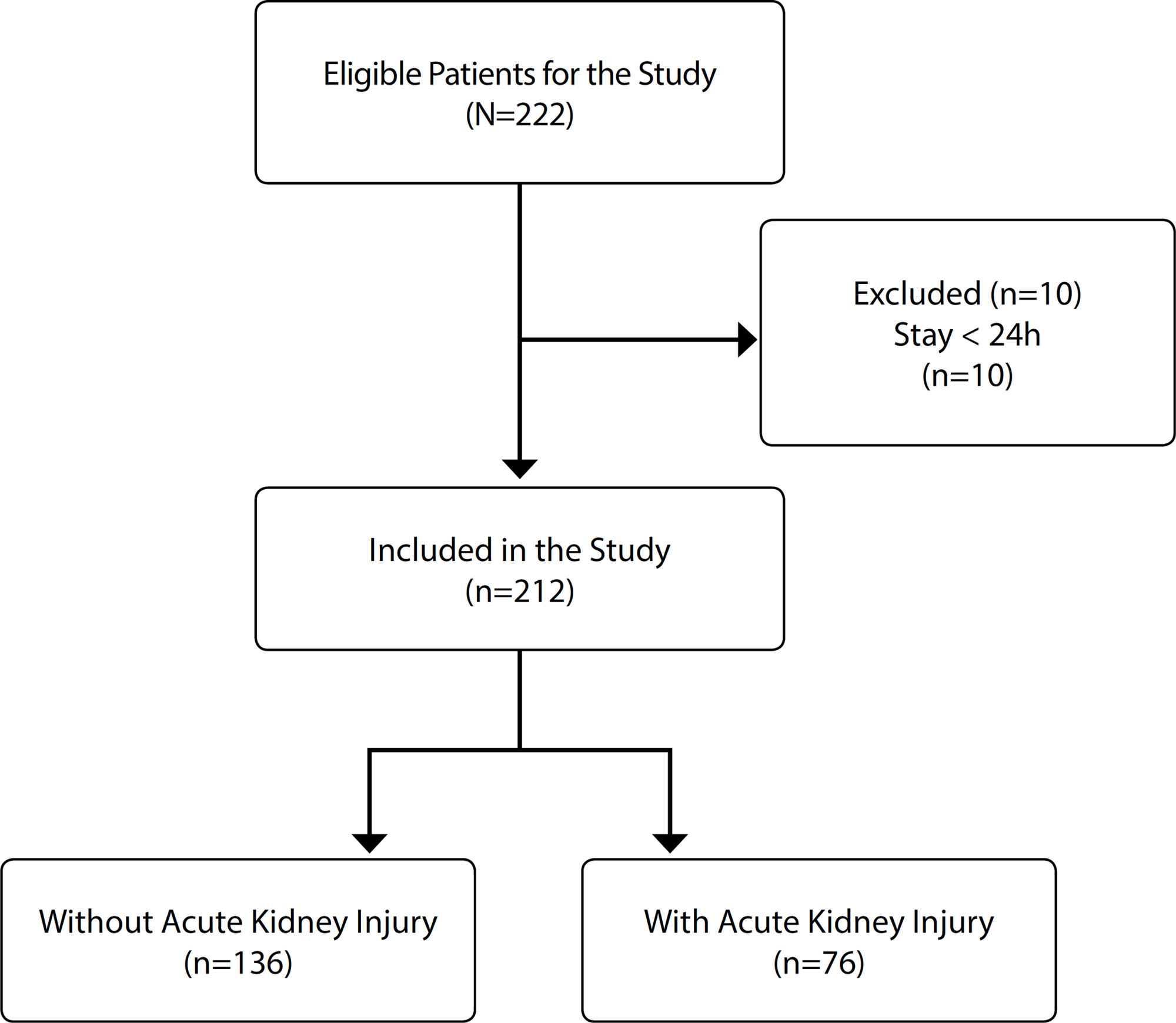
-
ORIGINAL ARTICLE08-08-2022
Social and territorial inequalities in the mortality of children and adolescents due to COVID-19 in Brazil
Revista Brasileira de Enfermagem. 2022;75(6):e20210482
Abstract
ORIGINAL ARTICLESocial and territorial inequalities in the mortality of children and adolescents due to COVID-19 in Brazil
Revista Brasileira de Enfermagem. 2022;75(6):e20210482
DOI 10.1590/0034-7167-2021-0482
Views0See moreABSTRACT
Objective:
To analyze the mortality rate of COVID-19 among children and adolescents aged 0 to 14 years.
Methods:
Ecological and exploratory study of children’s mortality rate by COVID-19 in Brazil, from February to October 2020. The study used the Severe Acute Respiratory Syndrome database to collect the data and made the analysis using descriptive spatial statistics by age and race/color classification.
Result:
The mortality rate due to COVID-19 represented 1.34 deaths per one hundred thousand in the total group evaluated. The age group with the highest frequency and mortality rate was 1 to 4 years of age. There is a higher frequency of deaths in the brown and Indigenous population.
Conclusion:
The distribution of deaths due to COVID-19 is unequal in the national territory, and there is a wide variation in the mortality rate by age and race/color groups.
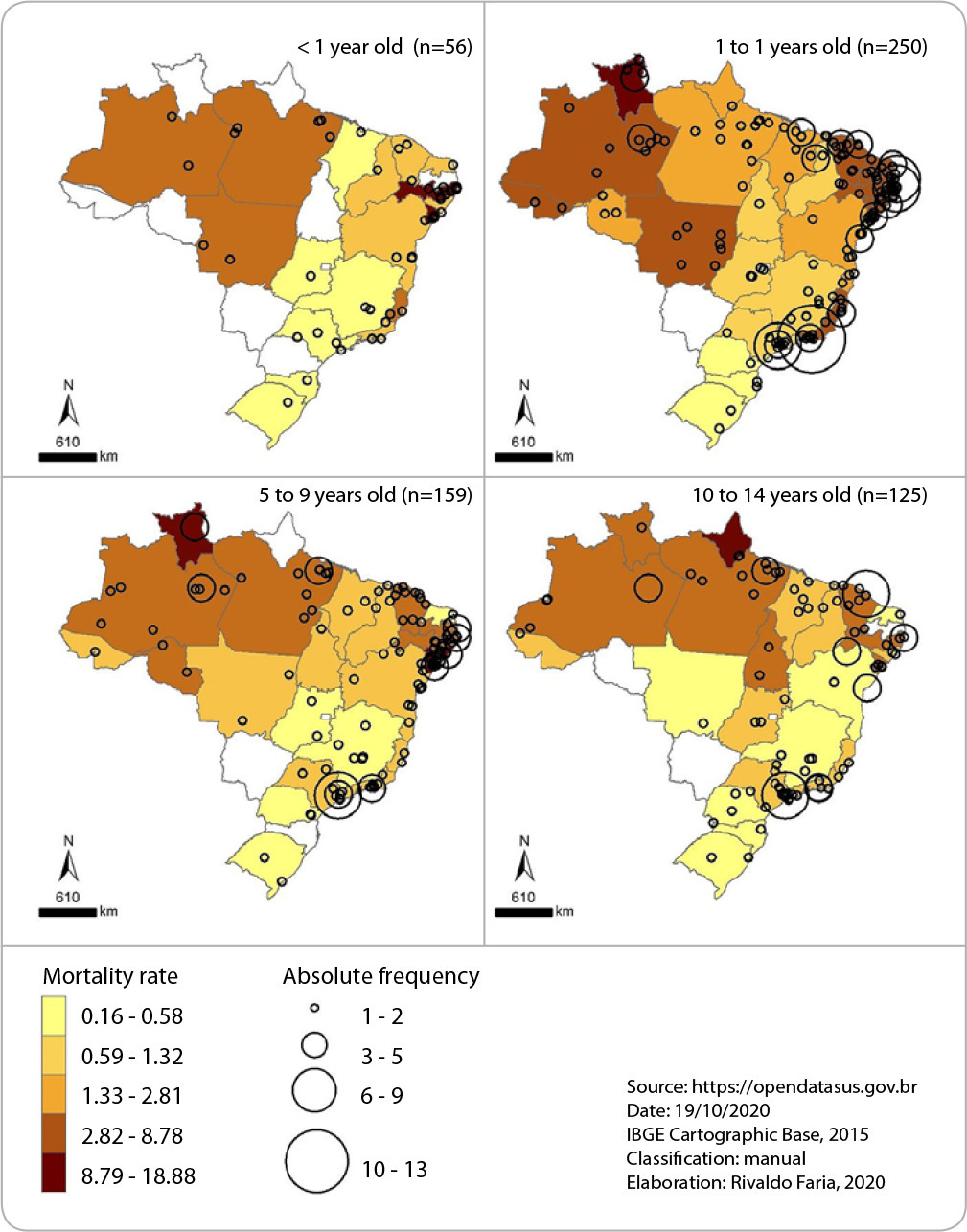
-
ORIGINAL ARTICLE06-09-2021
Professional practice in caring for maternal grief in the face of stillbirth in two countries
Revista Brasileira de Enfermagem. 2021;74(3):e20200253
Abstract
ORIGINAL ARTICLEProfessional practice in caring for maternal grief in the face of stillbirth in two countries
Revista Brasileira de Enfermagem. 2021;74(3):e20200253
DOI 10.1590/0034-7167-2020-0253
Views0See moreABSTRACT
Objective:
to understand professional care for maternal grief in the puerperium of stillbirth.
Methods:
a clinical-qualitative study with all the women who had stillbirths living in Maringá (Brazil) and participating in the Center d’Études et de Recherche in Family Intervention at the University of Quebec in Outaouais in Gatineau (Canada). Semi-structured interviews were carried out and the relevant aspects were categorized into themes.
Results:
the identified categories were: Assistance received in the puerperium with a focus on grief: hospital and outpatient environment, and Professional support in coping with maternal grief after fetal loss: with contact and memories, without contact and without memories and impossibilities of contact with the baby.
Final
considerations: the need for a multidisciplinary support and monitoring network for women who experienced fetal loss was evident. From this study, a routine of care for grief can be implemented in Brazil based on experiences in Canada.
-
ORIGINAL ARTICLE06-18-2021
Standard drug consumption: a study with elderly people in Primary Health Care
Revista Brasileira de Enfermagem. 2021;74(3):e20200729
Abstract
ORIGINAL ARTICLEStandard drug consumption: a study with elderly people in Primary Health Care
Revista Brasileira de Enfermagem. 2021;74(3):e20200729
DOI 10.1590/0034-7167-2020-0729
Views0See moreABSTRACT
Objective:
To identify the pattern of medication consumption among the elderly assisted in Primary Health Care.
Methods:
Descriptive, quantitative, cross-sectional study, with a sample of 315 elderly people, in a city in rural Rio Grande do Norte.
Results:
The average age was 72.41 years, with an average consumption of 3.15 medications per day, ranging from 1 to 16 medications daily. There was a prevalence of antihypertensives, antidiabetics, hypolipidemic and psychotropic drugs. 238 different drugs were mentioned, 15 of which were “potentially inappropriate drugs” for the elderly. Most of these patients follow treatment according to medical prescription, with low self-medication. Most elderly people buy their drugs, although many are available for free.
Conclusion:
The most consumed drugs are consistent with the most reported diseases (hypertension and diabetes). The daily use of inappropriate medications for the elderly is worrying, especially psychotropics, given the risks of dependence or health complications of these users.
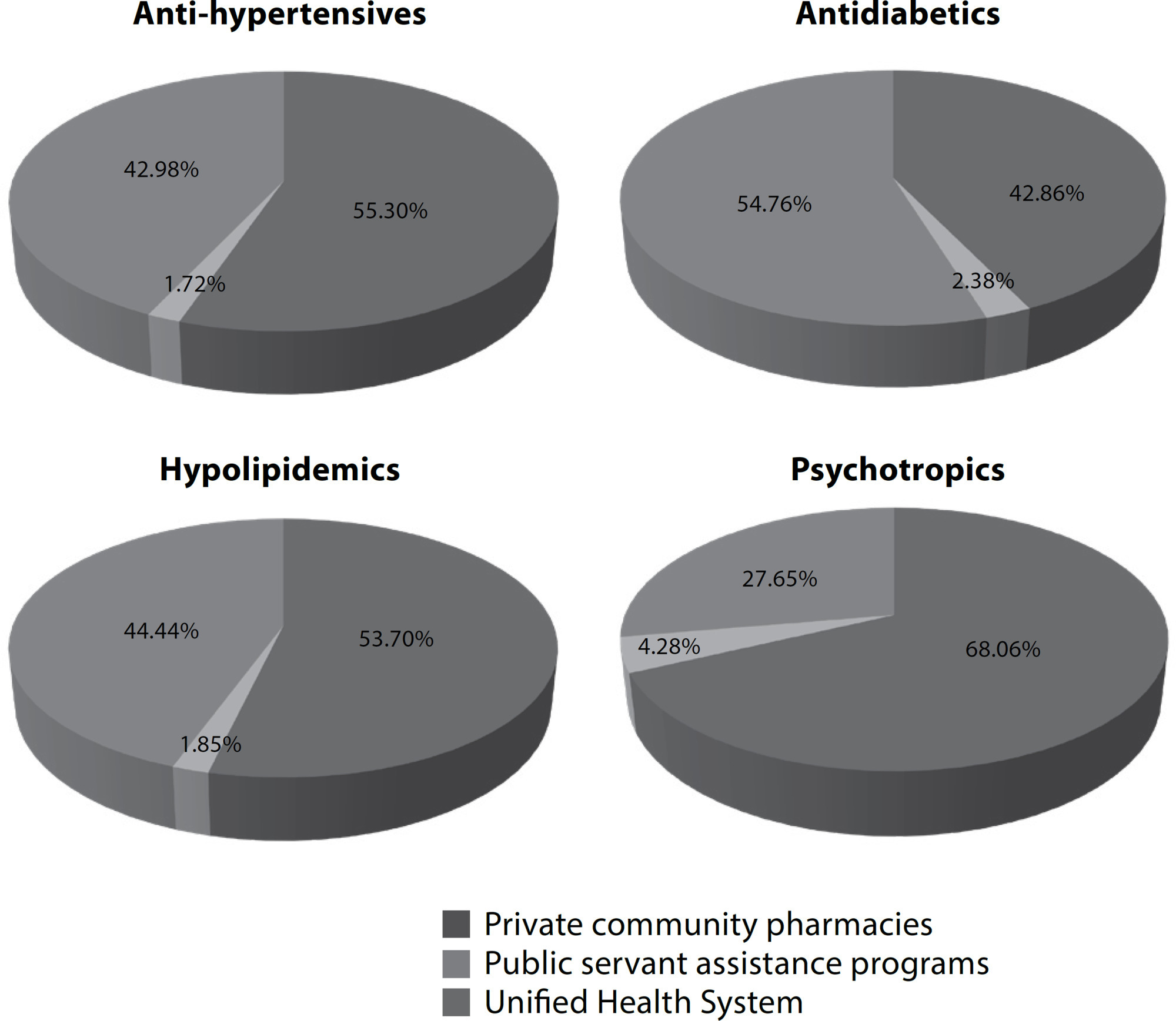
-
REVIEW11-26-2022
Parental burnout: a scoping review
Revista Brasileira de Enfermagem. 2022;75:e20210203
Abstract
REVIEWParental burnout: a scoping review
Revista Brasileira de Enfermagem. 2022;75:e20210203
DOI 10.1590/0034-7167-2021-0203
Views0See moreABSTRACT
Objective:
to map available evidence on parental burnout theme.
Method:
scoping review as according to the Joanna Briggs Institute. Search in January 2021, in six databases of publications in English, Portuguese or Spanish, without time limits. Data extracted and descriptively analyzed by three independent researchers.
Results:
374 articles were identified and 20 were included in the final sample, all published in English, from 2017 onwards. Parental burnout is a complex, multifactorial problem, distinct from burnout cases, depressive symptoms and other mental health alterations. It affects 0.2 to 20% of parents, has validated and suitable instruments for measurement; if not treated, can have consequences on marital life, work relationships, child neglect and violence.
Conclusions:
this is a recent theme that needs to be explored, due to the possible impact on children’s and families’ health and on parents’ work processes. Protocol registered in the Open Science Framework ().
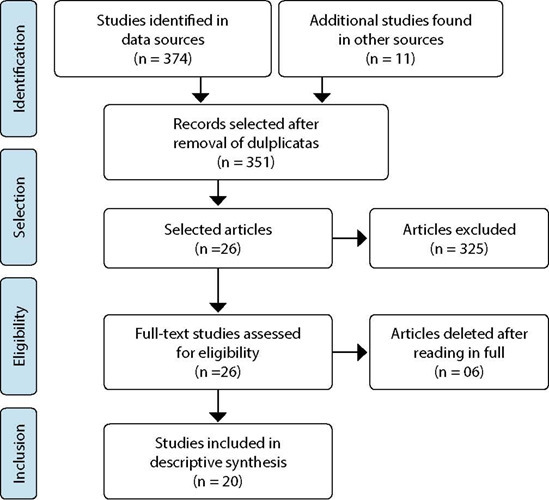
-
EXPERIENCE REPORT06-09-2021
Genograma e ecomapa como estratégias lúdicas de ensino de enfermagem na Atenção Primária à Saúde
Revista Brasileira de Enfermagem. 2021;74(3):e20201106
Abstract
EXPERIENCE REPORTGenograma e ecomapa como estratégias lúdicas de ensino de enfermagem na Atenção Primária à Saúde
Revista Brasileira de Enfermagem. 2021;74(3):e20201106
DOI 10.1590/0034-7167-2020-1106
Views0See moreABSTRACT
Objectives:
to report the experience using ludic strategies for the teaching-learning in the elaboration of the genogram and ecomap; and the use of these instruments by Nursing students in the Primary Health Care services.
Methods:
an experience report of the discipline Integrity of Care I (Integralidade do Cuidado I), of the Nursing School of Ribeirao Preto. Problems scenarios were created to approach the genogram and ecomap, comprising different family arrangements, represented by pedagogic puppets.
Results:
students actively participated, held collective discussions, elaborated genogram, and ecomap, identified the type of family, and the stages of the vital cycle, providing increased dynamics and interactivity. Subsequently, in supervised activities in Primary Health Care services, students elaborated the genogram and ecomap to monitor a family.
Final Considerations:
the use of ludic strategies propitiates the teamwork, active interaction of the group, and the creativity. The articulation between theory and practice resulted in a significant learning.
-
ORIGINAL ARTICLE07-14-2021
Venous ulcer healing treated with conventional therapy and adjuvant laser: is there a difference?
Revista Brasileira de Enfermagem. 2021;74(3):e20201117
Abstract
ORIGINAL ARTICLEVenous ulcer healing treated with conventional therapy and adjuvant laser: is there a difference?
Revista Brasileira de Enfermagem. 2021;74(3):e20201117
DOI 10.1590/0034-7167-2020-1117
Views0See moreABSTRACT
Objectives:
to evaluate the effects of venous ulcer healing in patients after six months of conventional treatment and adjuvant low-power laser therapy.
Methods:
prospective cohort study nested in a randomized clinical trial with 38 patients, allocated into an intervention group (conventional treatment and adjuvant laser therapy) and a control group (conventional treatment). Patients were followed up as outpatients, sociodemographic and clinical variables were collected, and indicators of the outcomes Wound healing: secondary intention (1103) and Tissue integrity: skin and mucous membranes(1101) of the Nursing Outcomes Classification. Generalized estimating equations, Kaplan-Meier tests, and robust Poisson regression were used in the analysis.
Results:
the clinical indicators Decreased wound size and Scar formation showed a statistically significant difference in the intervention group, higher number of healed wounds, lower rate, longer time to relapse.
Conclusions:
laser therapy adjuvant to conventional treatment returned better results in healing and lower recurrence rates after six months of intervention.
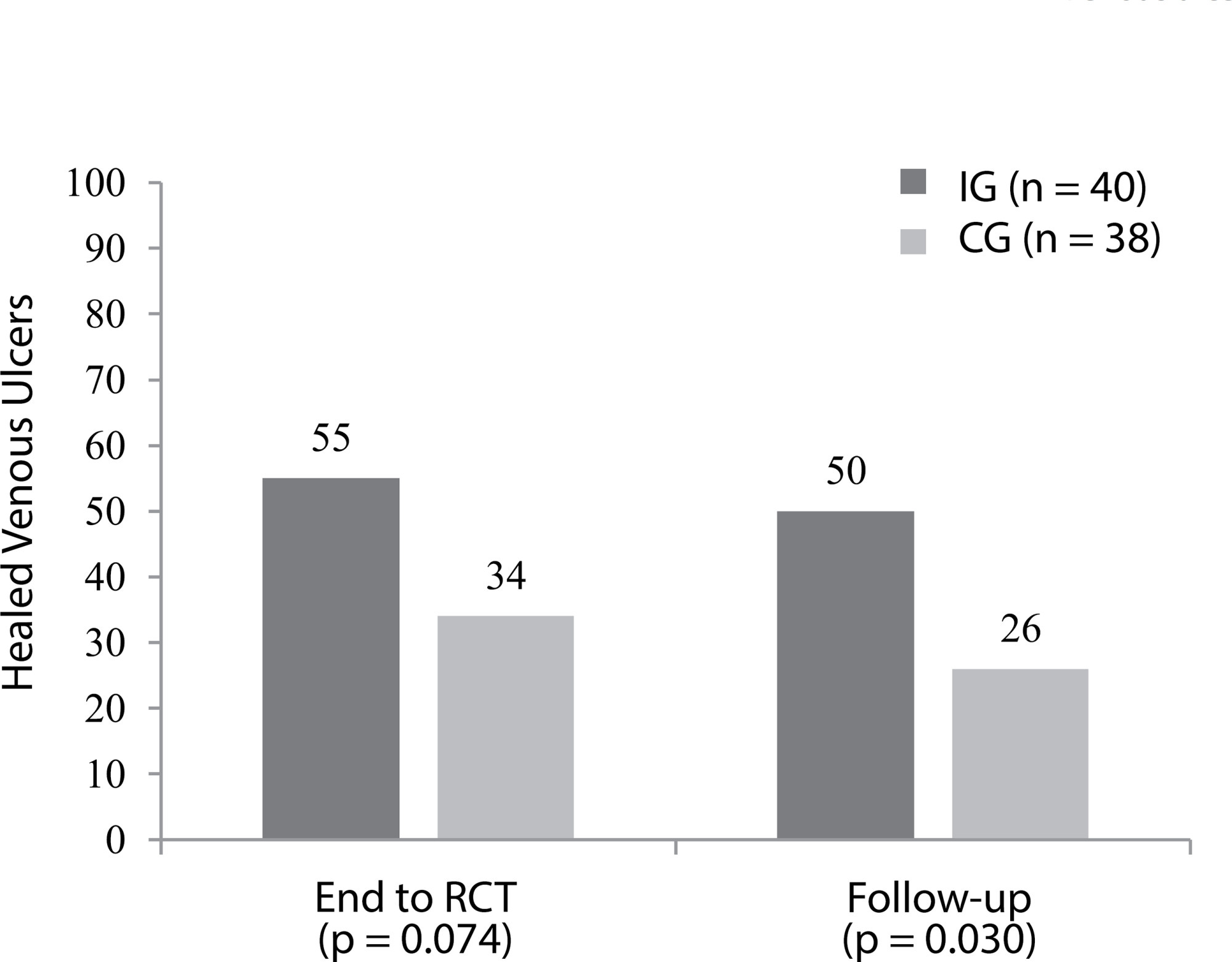
-
REVIEW11-19-2022
Nursing care for bed bath in patients with COVID-19: an integrative review
Revista Brasileira de Enfermagem. 2022;75:e20200704
Abstract
REVIEWNursing care for bed bath in patients with COVID-19: an integrative review
Revista Brasileira de Enfermagem. 2022;75:e20200704
DOI 10.1590/0034-7167-2020-0704
Views0See moreABSTRACT
Objective:
to identify the main nursing care procedures for performing bed bath in patients with COVID-19.
Method:
an integrative literature review. Five stages were followed for this research: research question elaboration (identification of the problem), search of studies in literature, study assessment, data analysis, and presentation of review. To search for primary studies, the VHL and SciELO databases were selected.
Results:
initially, 55 publications were found. After reading and analyzing the abstracts, the sample consisted of 15 studies.
Conclusion:
patients with the new coronavirus have specific care to perform a bed bath, oral, intimate and skin hygiene. It is important that professionals use adequate personal protective equipment, perform humanized care, continuously observing patients’ vital signs to avoid occurrence of adverse events, promoting patient safety.
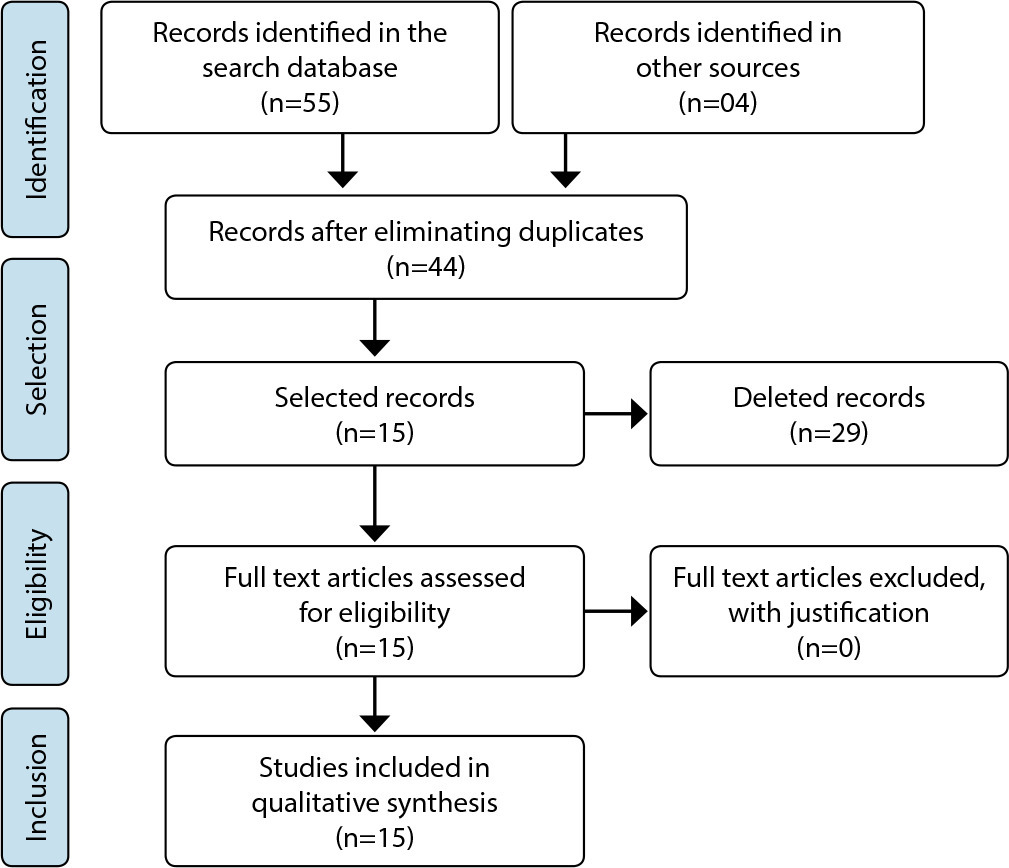
Search
Search in:
Nuvem de Tags
Adolescente (85) Atenção Primária à Saúde (239) COVID-19 (91) Criança (91) Cuidados de Enfermagem (269) Educação em Enfermagem (151) Educação em Saúde (139) Enfermagem (930) Enfermagem Pediátrica (86) Estudantes de Enfermagem (77) Estudos de Validação (131) Família (87) Idoso (208) Promoção da Saúde (99) Qualidade de Vida (104) Saúde do Trabalhador (86) Saúde Mental (145) Saúde Pública (82) Segurança do Paciente (150) Tecnologia Educacional (100)



